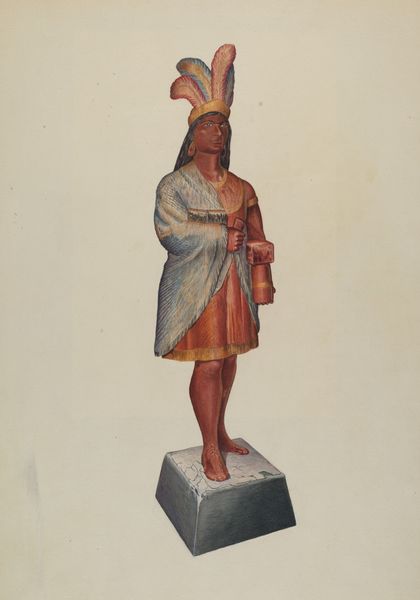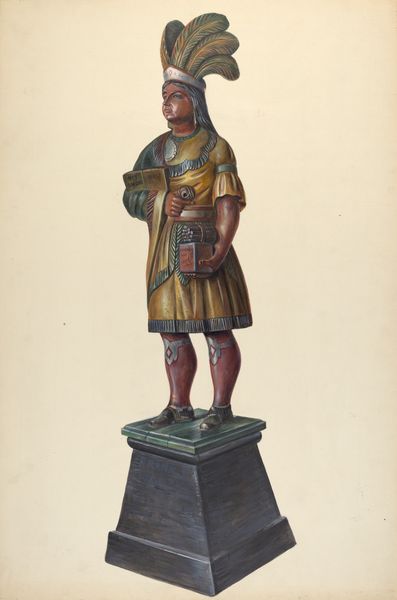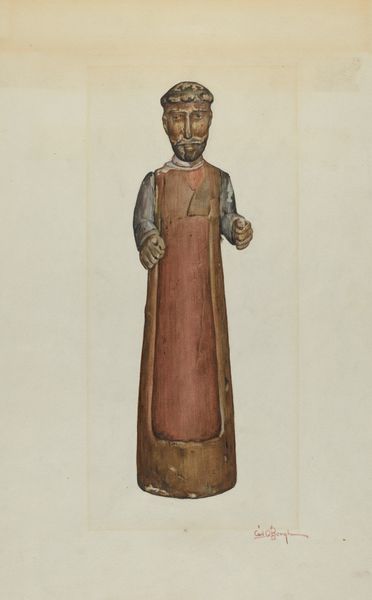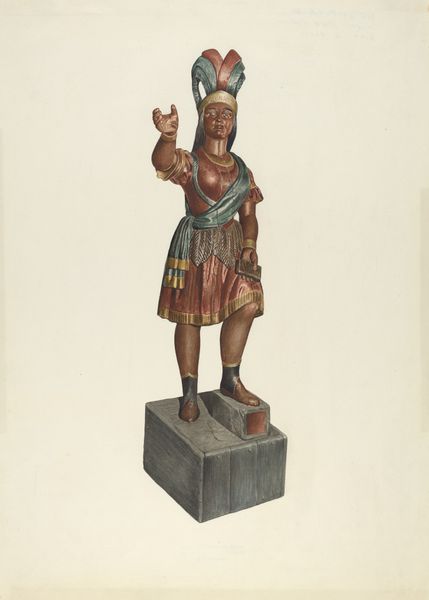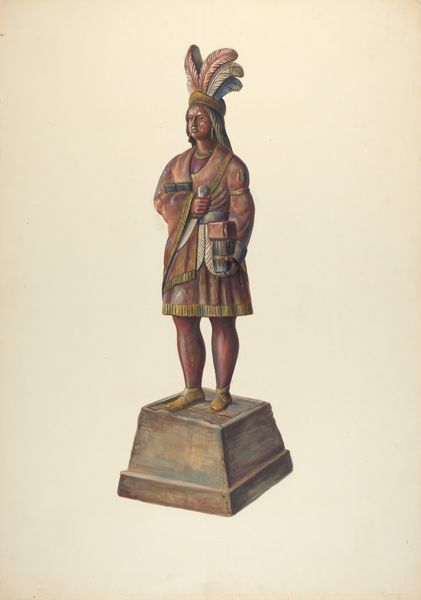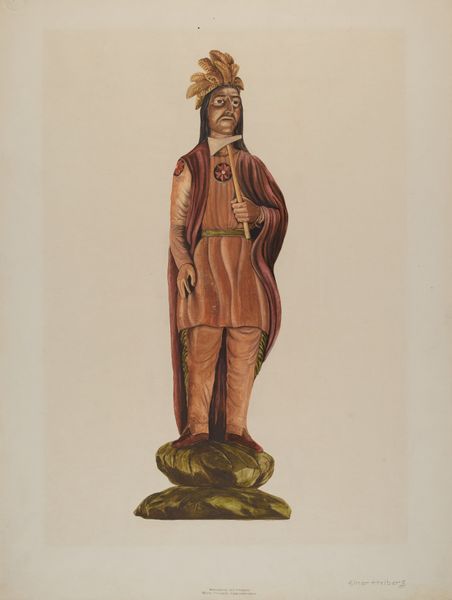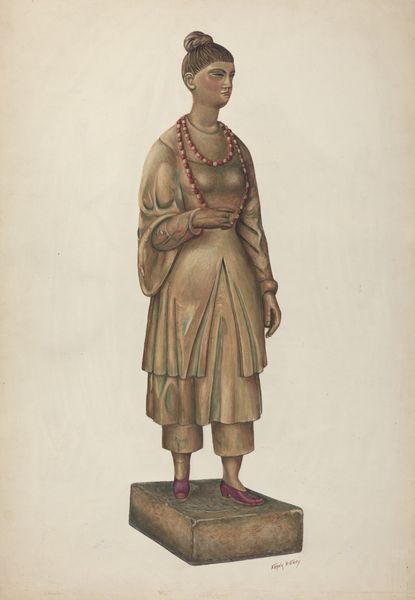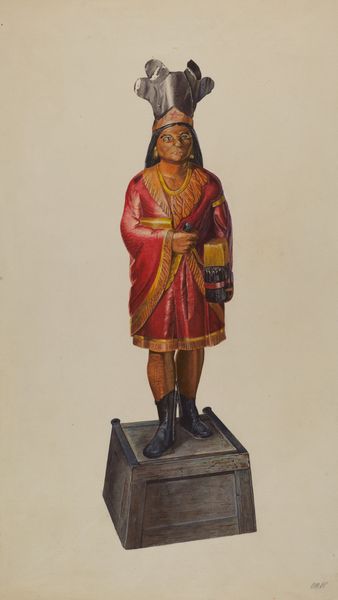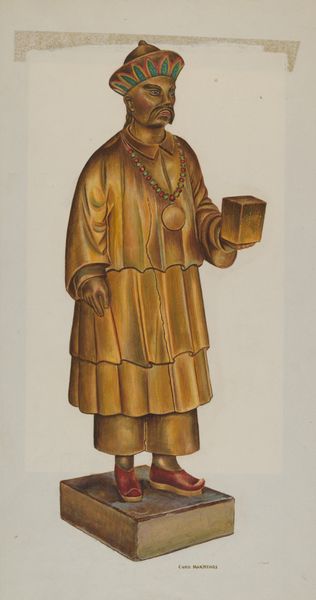
drawing, mixed-media
#
portrait
#
drawing
#
mixed-media
#
portrait drawing
#
portrait art
Dimensions: overall: 45.6 x 33 cm (17 15/16 x 13 in.) Original IAD Object: 4' 6" tall
Copyright: National Gallery of Art: CC0 1.0
Editor: Here we have the "Tea Importer's Sign," created around 1937 using mixed media. It presents a rather formal, almost stern figure. What underlying narratives do you see at play in this portrait? Curator: The work immediately provokes questions about representation and cultural exchange. We have to consider this in light of the complex history of the tea trade and its intersection with colonialism, power dynamics, and the exoticization of Asian cultures. The sign becomes a site where these histories converge, influencing how the depicted person is perceived. What is he holding? Does the object allude to specific dynamics related to the trade? Editor: It appears to be a small box. Perhaps representative of tea packaging or shipping? I didn't really connect this to global economies or social hierarchies. Curator: Precisely. Who would this sign have been marketing to, and what kind of message was it intended to convey? Was it playing on existing stereotypes, or challenging them in any way? We need to examine whose voice is centered and whose is marginalized through these images. Consider how this contrasts with contemporary discussions about cultural appropriation. How might this depiction contribute to the ongoing dialogue about identity and representation in the globalized art world? Editor: Thinking about it that way, it really changes how you view the piece. I was so focused on the subject, but I now see how its purpose feeds into historical narratives of power and representation. Curator: Exactly! Art gives us insight to discuss how those historical dynamics play out even now, informing contemporary debates on representation, trade, and global inequality. The sign becomes a tool to reveal complexities. Editor: It definitely offers a different lens through which to look at everyday objects and their deeper historical significance.
Comments
No comments
Be the first to comment and join the conversation on the ultimate creative platform.
